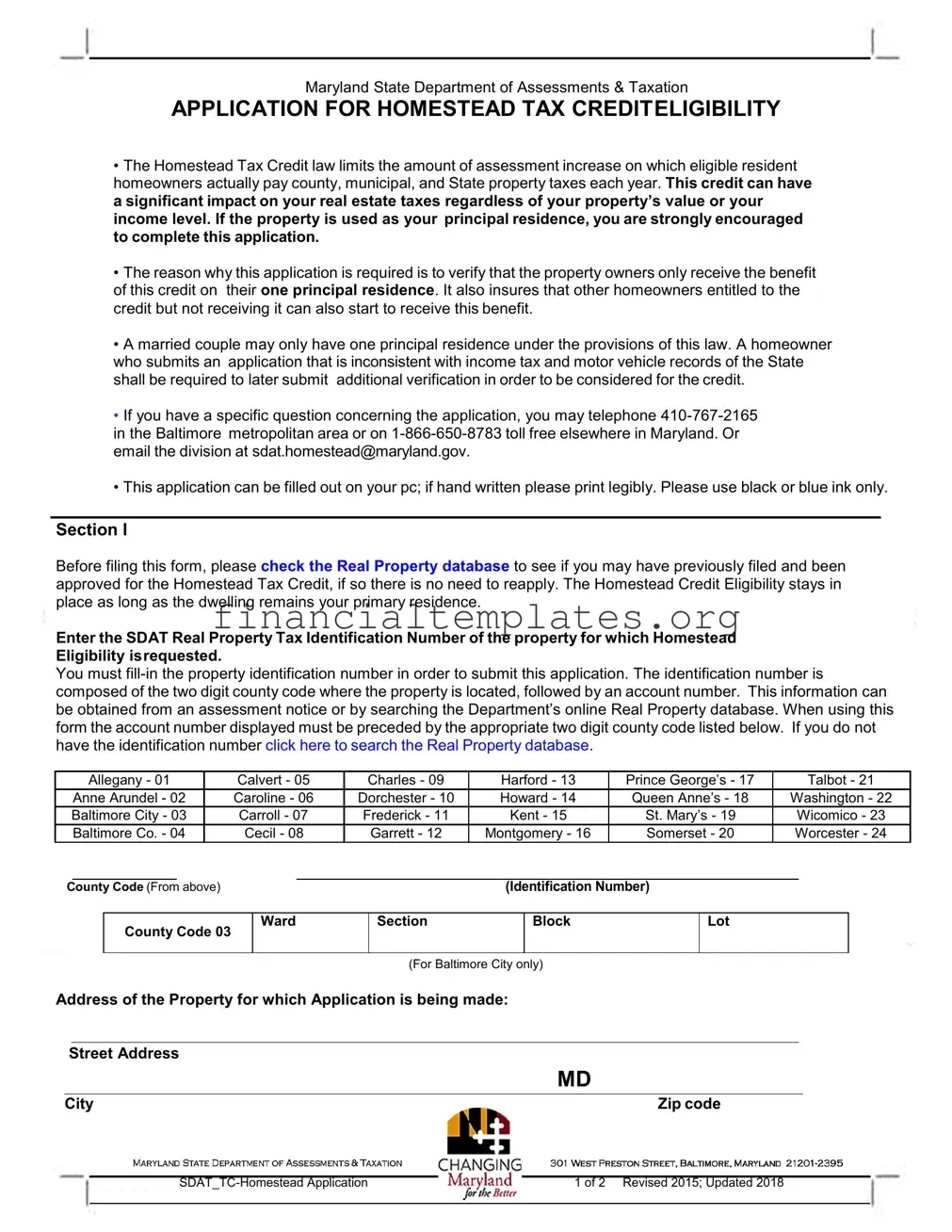The Mortgage Interest Deduction Form, much akin to the Homestead Tax Credit Application, serves homeowners by allowing a portion of their mortgage interest paid throughout the year to be deducted from their taxable income. Both documents aim to reduce the financial burden on homeowners, albeit through different avenues: one focuses on property tax liability, while the other targets federal and state income tax obligations. These forms necessitate the homeowner's details about their residence, emphasizing its importance as a principal dwelling. Furthermore, accuracy and honesty in the submission process are critical, as both contain stern warnings against the furnishing of false information.
The Property Tax Appeal Form shares similarities with the Homestead Tax Credit Application in that both engage with the state’s valuation of residential property. Homeowners use these forms to ensure their property taxes are equitable - the Homestead Tax Credit Application by capping assessment increases, and the Property Tax Appeal Form by contesting the assessed value of their home. Each document requires specific property identification details and encourages the homeowner to furnish accurate, verifiable information to affect their property tax obligations.
The First-Time Homebuyer Tax Credit Form is another document whose intent mirrors that of the Homestead Tax Credit Application, designed to offer financial relief to homeowners. This form, aimed at first-time buyers, provides a tax credit to reduce the income tax liability of those entering the housing market. Both documents are testament to government efforts to make homeownership more accessible and financially viable, requiring homeowners to qualify based on their residence characteristics and usage.
The Energy Efficiency Tax Credit Form and the Homestead Tax Credit Application both play crucial roles in reducing homeowners' financial burdens, albeit via different methodologies. While the Homestead Tax Credit directly limits property tax increases, the Energy Efficiency Tax Credit provides tax relief for homeowners who make qualifying energy-saving improvements to their homes. These forms necessitate detailed information about the property and the investments made, underlining the importance of initiatives aimed at encouraging responsible homeownership and energy conservation.
The Senior Citizen Property Tax Relief Application parallels the Homestead Tax Credit Application in its objective to offer property tax relief, specifically targeting senior homeowners. Both documents require the homeowner to certify their residence as their principal dwelling and provide detailed property information. These forms highlight the importance of supporting specific homeowner groups, ensuring that property taxes do not become an insurmountable burden, especially on fixed incomes.
The Rental Property Registration Form, while distinct in its target audience, shares a foundational similarity with the Homestead Tax Credit Application. Both documents necessitate the submission of detailed property information. However, the former is utilized by landlords to register their properties for rental, contrasting with the homestead application's focus on owner-occupied residences. Accuracy and compliance with local regulations emerge as key themes in both, ensuring property use aligns with governmental records.
Disability Exemption for Property Taxes Form bears resemblance to the Homestead Tax Credit Application in its purpose to offer tax relief to a specific group of homeowners. This form caters to homeowners with disabilities, offering them a reduction or exemption from property taxes as a form of financial assistance. Both forms underline the importance of submitting thorough and truthful information regarding one's living situation and the characteristics of the dwelling to receive benefits.
The Veterans’ Property Tax Relief Form, akin to the Homestead Tax Credit Application, is designed to afford financial relief, specifically to veterans and, in some cases, their surviving spouses. This form provides veterans with a reduction or exemption from property taxes, recognizing their service. Like the homestead tax credit, it necessitates detailed property information and serves as a reminder of societal commitment to supporting veterans through beneficial policies.
The Agricultural Property Tax Credit Form, while catering to a more specialized segment of property owners, parallels the Homestead Tax Credit Application in its fiscal relief purpose. This form provides tax incentives to owners of agricultural land, aiming to support farming and conservation efforts. Both documents share the requirement of precise property information and underscore the broader theme of offering tax relief to encourage and maintain specific beneficial land uses.
Finally, the Solar Energy System Tax Credit Form, like the Homestead Tax Credit Application, facilitates a reduction in tax liability for homeowners who take certain actions regarding their property; in this case, the installation of solar energy systems. Both initiatives exemplify government encouragement for homeowners to invest in their properties in ways deemed beneficial socially or environmentally, necessitating detailed documentation of the property and the improvements made.


